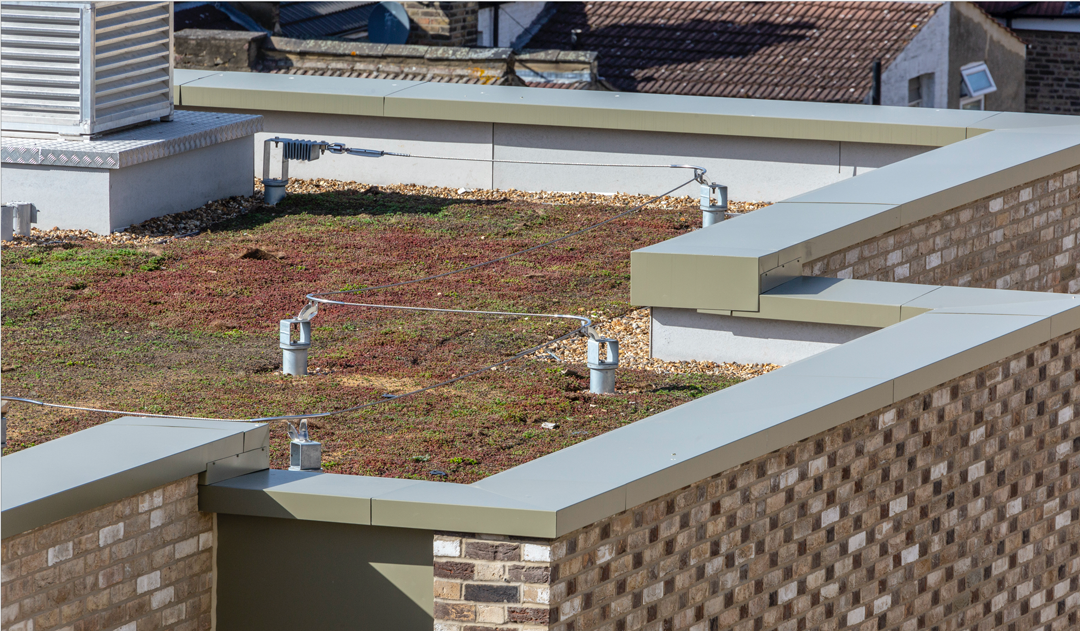
Insulation for Blue Roofs
Over the last 6 years or so a new term has become part of the roofing vocabulary – the ‘Blue Roof’. A phenomenon that initially centred around the London roofing market demand for the ‘Blue Roof’ has expanded to many of Britain’s major cities. But what is the ‘Blue Roof’, why is demand for it spreading and what are the impacts on your insulation choice?
A ‘Blue Roof’ is a means of attenuating water at roof level. Not to be confused with water storage, attenuation is the short-term retention of rainwater that relieves the demands on traditional below ground drainage systems by delaying the drainage of the roof. Typically, a ‘Blue Roof’ is designed to be half empty within 24 hours.
The reason why London leads demand is due to ‘Blue Roofs’ being within the London Plan 2019, which requires new build developments to use this water management method due to almost the entire bank of the Thames being at risk of regular flooding by 2030, with around 6 % of London at high risk (1 in 30-year event) of tidal, river or surface water flooding, and 11 % at medium risk (1 in 100-year event). Other cities are facing flood risk and water management issues, hence the wider adoption of ‘Blue Roofs’.
A key decision in insulation selection will be whether you are constructing a warm roof or an inverted roof, which may depend on your waterproofing supplier. Whether installing an inverted or warm roof, it is critical that the chosen waterproofing is 3rd party certified (i.e. BBA) for ‘Blue Roof’ applications; not all are.
Insulation boards are currently not 3rd party certified specifically for ‘Blue Roof’ applications, so it falls on the insulation manufacturer to provide advice on suitability for a ‘Blue Roof’ application. The suitability of the insulation will depend on a variety of factors such as the finishes on the roof and the subsequent use of the roof, for example if the roof is a roof terrace or podium, then there may be a requirement for vehicular traffic to cross the roof for emergency or other access i.e. fire engines. If this is the case, the insulation (and ‘Blue Roof’ components) need to be able to accommodate the loads.
In most cases a blue roof is finished with a green roof, so the loading is not such a significant factor. However, in all inverted roof applications the insulation must be suitable for installation above the waterproofing where it will be in contact with water some of the time.
Next month’s QI by QI – What is the difference between BBA and KIWA certification?

The award-winning The Forge, Upton Park, uses Ravatherm XPS for its Blue Roof areas.
